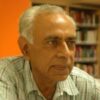Spirituality among Disparities
TRANSCEND MEMBERS, 5 Jun 2023
Dr. Ravi P. Bhatia – TRANSCEND Media Service
A well known cliché often repeated is that India is a land of diversities of all types. Like all clichés, there is a lot of truth but also a grain of exaggeration in this statement. Yes there are multiple types of diversities — religious, political, economic, linguistic, geographic, ethnic, cultural, and the type of food or cuisine-gastronomy.
On the religious front we have people belonging to all the major world religions — Christianity, Islam, Hinduism, Buddhism, Jainism, Jewish and some smaller ones such as Zoroastrianism (Parsis) and Baha’i Faith and some other lesser known ones such as Arya Samaj. Not only are these major religions flourishing, their different sects such as Catholic and Protestant among Christianity, Shia and Sunni among Islam and so on in other religions such as Jainism also have large number of followers with their specific rituals and taboos. Generally followers of different religions have learnt to live in peace but occasionally there is hostility and violence between them.
We have so many living faiths because when people of different faiths were driven out from their homelands they chose to come to India that welcomed them and their religions with open arms. This happened with Parsis and Baha’is who were driven out from Iran (also known as Persia). There are also a handful of Jews who have made this country their homeland.
Geographically, India boasts of the highest mountains, the driest and the rainiest, the coldest and hottest regions of the world and a large swathe of temperate areas with vast types of flora and fauna. We also have a large coastline with its distinctive types of fish, mangroves and coconut trees. Obviously, the food patterns change accordingly — with varied types of vegetables, fruits, fish and meat.
Linguistically, India has perhaps the largest number of languages spoken in the world. Apart from the 22 official languages of the country there are countless number of indigenous languages and dialects spoken in various parts. Hindi is the largest spoken language with about 50 percent people who have declared it as their mother tongue in the last census. English is also widely used in administrative, legal and technical circles apart from being the official language of the Indian state of Nagaland.
There are 29 states and seven Union Territories (smaller states) of the country that add to diversities — linguistic, cultural, even political. As in other spheres, there is a wide spectrum of politics in India — from extreme left to right wing parties — communism, Hindu ideologies, middle of the road parties, parties devoted to the Dalits (poor deprived sections), Muslims, the tribal peoples, and so on.
All this political diversity adds to the excitement and charm at the time of elections. Or should we say, round the year since some elections or the other — national, state, municipal, local etc are held almost throughout the year.
Holding the diverse country together as India is, is a major challenge to the ruling parties. The Congress party has ruled the country for about 50 years. Now the Bharatiya Janta Party (BJP) is ruling at the Centre and in several states of the country.
Despite all the diversities indicated above there has been a spirituality and oneness in this region since prehistoric times. Economically India was a rich country and foreigners came for trade and commerce. Simultaneously they were attracted spiritually to our religions, cultures and knowledge systems. This happened especially with people coming from the East — China, Japan, Cambodia, Burma and Sri Lanka to name a few. One can see remnants even today — the Angkor Wat temple complex in Siem Reap in Cambodia, the many temples in Sri Lanka that were once Hindu temples converted into Buddhist places of pilgrimage.
India itself boasts of char dham – religious places of worship –north, east, south and west that most devout Hindus try to visit to gain spiritual strength, peace and harmony. Not only Hindus, but many foreigners come to partake and enjoy the spiritual heritage that is India.
This ancient land welcomes you for tourism, trade and spirituality. Everyone is welcome to partake of the spirituality and diversity of Bharat, India.
______________________________________________
 Dr Ravi P Bhatia is a member of the TRANSCEND Network for Peace Development Environment, an educationist, Gandhian scholar and peace researcher. Retired professor, Delhi University. His new book, A Garland of Ideas—Gandhian, Religious, Educational, Environmental was published recently in Delhi. ravipbhatia@gmail.com
Dr Ravi P Bhatia is a member of the TRANSCEND Network for Peace Development Environment, an educationist, Gandhian scholar and peace researcher. Retired professor, Delhi University. His new book, A Garland of Ideas—Gandhian, Religious, Educational, Environmental was published recently in Delhi. ravipbhatia@gmail.com
Tags: Diversity, History, India
This article originally appeared on Transcend Media Service (TMS) on 5 Jun 2023.
Anticopyright: Editorials and articles originated on TMS may be freely reprinted, disseminated, translated and used as background material, provided an acknowledgement and link to the source, TMS: Spirituality among Disparities, is included. Thank you.
If you enjoyed this article, please donate to TMS to join the growing list of TMS Supporters.

This work is licensed under a CC BY-NC 4.0 License.